Like most people of Armenian ancestry, George Alemshah has lived an international life. Born in Heliopolis, Egypt in 1939, George immigrated to Beirut, Lebanon as a teenager. There he met his wife of more than 30 years, Sonia. With the whisperings of an eminent war in the air, the Alemshah family left for North America. After a seven year stop over in Canada, George, Sonia and their two young sons finally settled in sunny southern California where George has worked as a successful Interior Designer and Artist.
George's love for painting was a joy born out of necessity. Having lost his own father as a small boy, his first paintings were a way to remember his father and his childhood. A bit disjointed, sometimes shattered; just like his journey through life - George's paintings can be described as looking through the eye of a prism. His style (often described as Cubic Impressionism) was one he perfected in Beirut. George has studied with Eugene Kassassinoff, the former artist to the Egyptian Royal Family.
George attained a high degree of success with permanent exhibitions around Lebanon and much of the Middle East. But George's paintings, like his life, have always changed and evolved. His cubist beginnings have graduated into many forms of abstract expressionism. No longer content with only Egyptian influences, George has done a series of African Animals, abstract expressionism and traditional Armenian scences. He has also continued to paint his "bon vivant" series. These paintings depict George's philosophy of life; eat, drink and be merry.
Representative of the times in his life, George has paintings in private collections around the world. In those paintings are chronicled: Exotic places, childhood memories, deep seated fears and shattered dreams but most of all love for his family, life and hope for tomorrow.
A few words from George Alemshah
About Painting
Painting is my answer to Life. It's the way I deal with the ups, downs, ins and outs of my existence. Therefore, my paintings are often a very good reflection of my inner self.
My Background
I am an Armenian born in Egypt. My life has taken me to many places including Beirut, Lebanon and Toronto, Canada. I have been a Californian since 1975. I started painting in the early 1960's and have been heavily influenced by the many different places, cultures and traditions I have been witness to.
My Influences
The Master Painters who have had the most influence on my aesthetics are George Rouault, Bernard Buffet, Gaugin, Van Gogh and Picasso.
My Painting Series
My Bon Vivant series are still life paintings. I paint these works about the things that bring joy to ones life: flowers, food and wine.
My Egyptian series are my interpretation of the Egyptian Hieroglyphics. Growing up in Egypt left a strong impression on me and these paintings are my tribute to that place and my childhood.
My African series are scenes inspired by the wildlife and foliage native to the continent of Africa.
My Abstract series are my impressionist paintings. These paintings are the most direct expression of my feelings and artistic aesthetics.
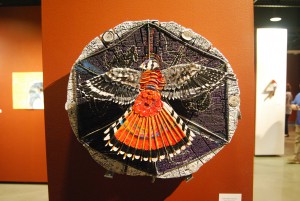
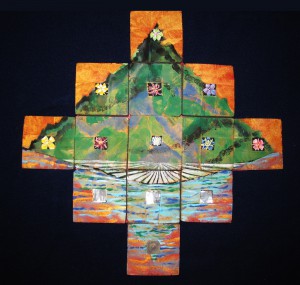
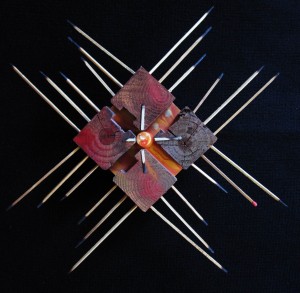
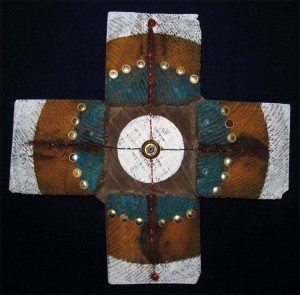
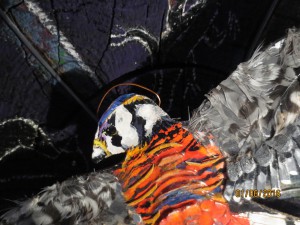
My educational background includes a Master of Fine Arts degree from California State University at Fullerton (Art Alliance Award), and a Bachelor of Fine Arts degree from Hunter College of the City University of New York (Graduate Study Award). I taught art to university level students at Orange Coast College (CA Grant for Instructional Improvement) and Cal State University at Fullerton, and to elementary students at Harbor Day School in Corona del Mar (CAEA Exemplary Art Educator Award).
The following museums have exhibited my work: Los Angeles County Museum of Art (Sales and Rental Gallery), San Luis Obispo Museum of Art (Award), Orange County Museum of Art, Laguna Art Museum, San Bernardino County Museum.
These galleries have exhibited my work: Angel’s Gate Cultural Center, Cypress College Gallery, Brea Cultural Center, Ariel Gallery in New York City (Award), Fullerton Museum Center, Palos Verdes Art Center, Chapman University Gallery, Irvine Fine Arts Center, Huntington Beach Art Center, LA Harbor College Gallery, Grand Central Art Center, Spezzano Gallery in Long Beach, Santa Ana College Gallery (Award), Pomona Gallery 57 Underground, 2nd CC Gallery in Long Beach, CA, Aliso Viejo Library Retrospective in Southern California, Coastline College Invitational, Huntington Beach, CA., Coastline Gallery in Newport Beach, CA.
I have been selected for Public Art Projects, including Caltrans Freeway Art Panel Project, Orange County Transit District Bus Mural, Irvine Fine Arts Center Magnetic Mural ,KOCE Butterfly Initiative Fundraiser Project at Rogers Gardens, CSU Fullerton Medical Center “Art4Health” Project (Award), Pasadena Park Playground Design.
For the City of Irvine, I was chosen to serve as Artist-in-Residence at the Storefront Studio Gallery in the University of California, Irvine Marketplace for three months.
The outdoor Art Festivals that I have been in are: Beverly Hills Art Faire, La Quinta Art Faire, Long Beach Museum of Art Faire, the Costa Mesa Artistic License Faire, and the San Diego Talmadge Art Faire.
Through the Arts O.C. (California Art Council), my husband and I funded an Artist-in-Residence Program for O.C. public elementary schools, bringing professional artists into classrooms for five years. Also, I currently serve on the Board of Directors for ART4KIDS, INC., a non-profit foundation that reaches out to children in distress by making art supplies available to them. I served as a Peace Corps Volunteer art teacher at the Universidad Industrial de Santander in Colombia, South America.
My professional memberships include: Orange County Visual Artists (past-president), Southern California Artists (past president and current Exhibitions co-chair), California Art Educators Association, and SoCalpapa (plein aire painters group) .
I have been an artist since 1964. During most of this time I was also a Professor of Sociology at California State University, Fullerton. My occupation greatly influenced how I see the world as an artist and how I present art. Sociologists must be able to analyze and explain the world as observers who are not totally immersed in their cultures. They do not accept institutions and cultural beliefs at face value. This has helped me to avoid fads and fashions in art and to have my own approach to art.
Although I was born and raised in New York City, I also spent many Summers in rural New York State. Consequently, I have a strong attraction to both rural and urban places. Both environments can be seen as landscapes with unique features.
For reasons unknown to me, I have always had a fascination with Australia. Consequently, I have visited Australia several times since 1973 and have observed European - Australian society and Aborigine culture. I saw several shows featuring Aboriginal art and traveled extensively through the Australian outback where I came to appreciate this unique natural environment and it's species. I also observed some of the devastating effects which urbanization has had on native Australian plants and animals.
I have been living in Southern California for 40 years and I am interested in how the city and the desert interact and often conflict as environments. Many of my paintings fantasize about how desert species and urban structures might combine and mutate into weird forms.
ARNHEM LAND TO SOUTHERN CALIFORNIA: NATURE AND THE CITY
Aboriginal Australian art dates from 30 to 40 thousand BC, and was amazingly abstract long before European art. However, it was not considered art until recently, and is only now becoming widely appreciated. Arnhem Land is one of the centers of Aboriginal culture in Australia. There, and elsewhere in Australia, Aborigines have lived almost as one with their natural environment. Their culture is symbolic of humans and nature living in a balanced relationship.
Many of the paintings, drawings and constructions in this show use some of the ideas and techniques employed by Aborigines, but the religious, philosophical and mythological meanings which Aborigines rely on in creating art are not intended in my art works. The goal is to interpret my own environmental experiences and observations by using Aborigine symbols such as lines, dots, and earth colors. I also alter some of their symbols and add my own interpretations. For instance, I use large dots, repetitious line patterns which I favor, and modern color combinations. All of the art in this show has at least one feature in common with Aborigine art - a respect and appreciation of nature.
I am attracted to the macrostructure of cities -- to the shapes of buildings, and urban skylines as landscapes. In this show, I fantasize about how Aborigines might paint a skyscraper or a cityscape.
Although most people do not view the desert in Southern California as a place of beauty or interest, it has unique animal and plant species perfectly adapted to it. Perhaps Aborigines would feel at home there since much of their natural environment is arid. I try to imagine desert plants and animals from the Aborigine perspective, and to see the desert as an ecosystem which should exist and thrive on it's own.